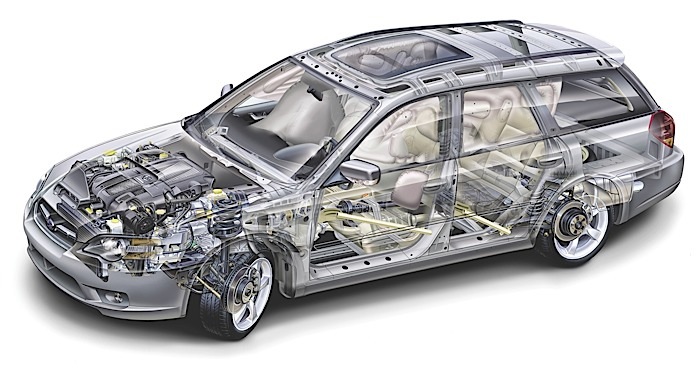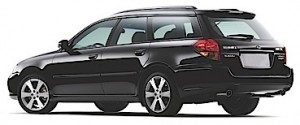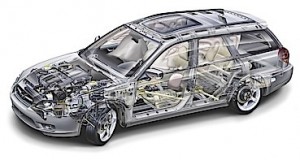Subaru Repair Tips: 2005-2009 Legacy Alignment
The fourth-generation Subaru Legacy was produced from 2005-2009. It was available as both a sedan and a wagon until 2008 when the wagon was dropped. The front suspension design uses a MacPherson strut. The rear suspension is a multi-link design that changes toe and camber dynamically as the suspension and body change position.
Inspection
If you look at online forums about Subaru alignment problems, you will quickly realize the problem is often not with the vehicle, but the driver. The most likely condition requiring Subaru repair is a lack of communication between the shop or dealer and the owner. Often problems occur when the owner has unreal expectations for what a Subaru alignment can do for their vehicle. They often are experiencing a pull or related condition when they bring their vehicle in for an alignment. The shop will perform the alignment without directly addressing the complaint. When the Subaru repair is complete, the customer cries bloody murder. The only way to avoid trouble on this particular type of Subaru repair is to ask the owner why they are bringing their vehicle in for alignment.
Subaru advises that technicians should use a sequential process when aligning the Legacy. The process is designed to alleviate issues with “cross-talk” between the camber caster and toe adjustments.
Ride Height
The first step in this process is to measure the ride height. Subaru models use the top of the wheel well to the center of the wheel. In the front, the distance should be 381mm (±12mm). In the rear, the distance should be 365mm for sedans and 375mm (±12mm) for the wagon. These measurements should be taken with a full tank of fuel.
If the measurements are below specifications, inspect the struts and springs. Often a collapsed upper strut mount or bent strut shaft can cause a change in ride height. While the legacy is not known for broken springs, it can happen.
Subaru recommends adjusting the camber in the front and rear in the alignment process.
Camber and Caster
The front camber can be adjusted using factory-installed cam bolts installed in the upper bolt-hole of the strut mount. If the factory bolts can’t bring the vehicle into alignment, you can use aftermarket cam bolts that have a greater range of alignment for this Subaru repair.
If the camber is out of specification, inspect the lower control arm bushings. This type of bushing works with compressed rubber, and when the control arm travels through its full stroke, it stretches the bushing and will exhibit a crack or split. This does not affect the performance of the bushing and will not continue to spread to the rest of the bushing. It does not cause body vibrations, noises or braking issues. This is why check for deflection is a better test.
The rear camber is not adjustable. But, the camber angle is a great indicator of the health of the bushings in the links. Over time, the bushings will degrade and cause negative camber and toe that leads to inner edge tire wear, which is a main reason some customers come in with Subaru alignment complaints.
The front caster is not adjustable. If the caster is outside of specifications, inspect the lower control arms for damage and/or worn bushings.
Toe is the most critical angle for the Legacy. This is why it is the last in this process. The front rear toe should be set close to 0 in degrees or millimeters. Make sure the thrust angle is as close to zero as possible. The rear toe can be adjusted by eccentric cams on the inboard in the rear arms.
Tire Rotation
Subaru recommends rotating the tires every 7,500 miles. For non-directional tires, it is possible to do a modified crisscross pattern. For directional tires, you can just go front to rear. When the tires are rotated, the TPMS system must learn the new positions of the tires.
















